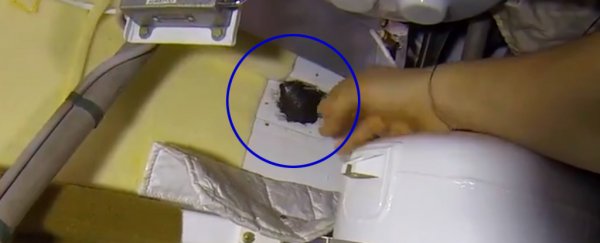A Russian cosmonaut aboard the International Space Station (ISS) posted a video Monday showing that a hole found in the Russian part of the station earlier this month had been sealed.
The video, featuring cosmonaut Sergei Prokopyev on Monday, showed the two-millimetre hole now covered with a black sealant and hidden behind a fabric flap.
Shortly after the leak was found, news outlets, including The Telegraph and MailOnline, reported that a crew member onboard the ISS had plugged the hole with his finger before covering it with a makeshift plug made from bin-bag seals, duct tape, and medical gauze.
Prokopeva denied those rumours in the video, saying in Russian as he pointed to the sealed flap: "No one is plugging the hole with a finger as they write in the media," he added.
You can see the sealed hole at 01:06 in the video below:
#НовостиИзНевесомости от космонавта Сергея Прокопьева:
— РОСКОСМОС (@roscosmos) September 10, 2018
«Друзья, решил снять видео, чтобы ответить на ваши многочисленные комментарии и развеять слухи. На МКС всё спокойно!» pic.twitter.com/ri7hKbe0SL
Earlier this month the Russian space agency's head, Dmitry Rogozin, also alluded that the hole might have been created deliberately to sabotage the Russians.
Prokopeva also attempted to dispel those rumours, saying in Monday's video: "As you can see, everything is calm on board; we are living in peace and friendship as always."
The hole appeared in the Soyuz capsule,on the Russian side of the ISS on August 29, NASA said.
The main suspect was a small meteorite, Russian officials said the following day.
But the story took a sinister turn days later, on September 3, when Russia's space agency leader Rogozin suggested that there were "traces made [by] several attempts to drill a hole," as reported by Russia's state-run news agency TASS.
He said: "There are traces of a drill sliding along the surface. We don't reject any theories."
The ISS is suspended 250 miles (402 kilometres) up in space and is home to three Americans, two Russians, and one German.
This article was originally published by Business Insider.
More from Business Insider:
